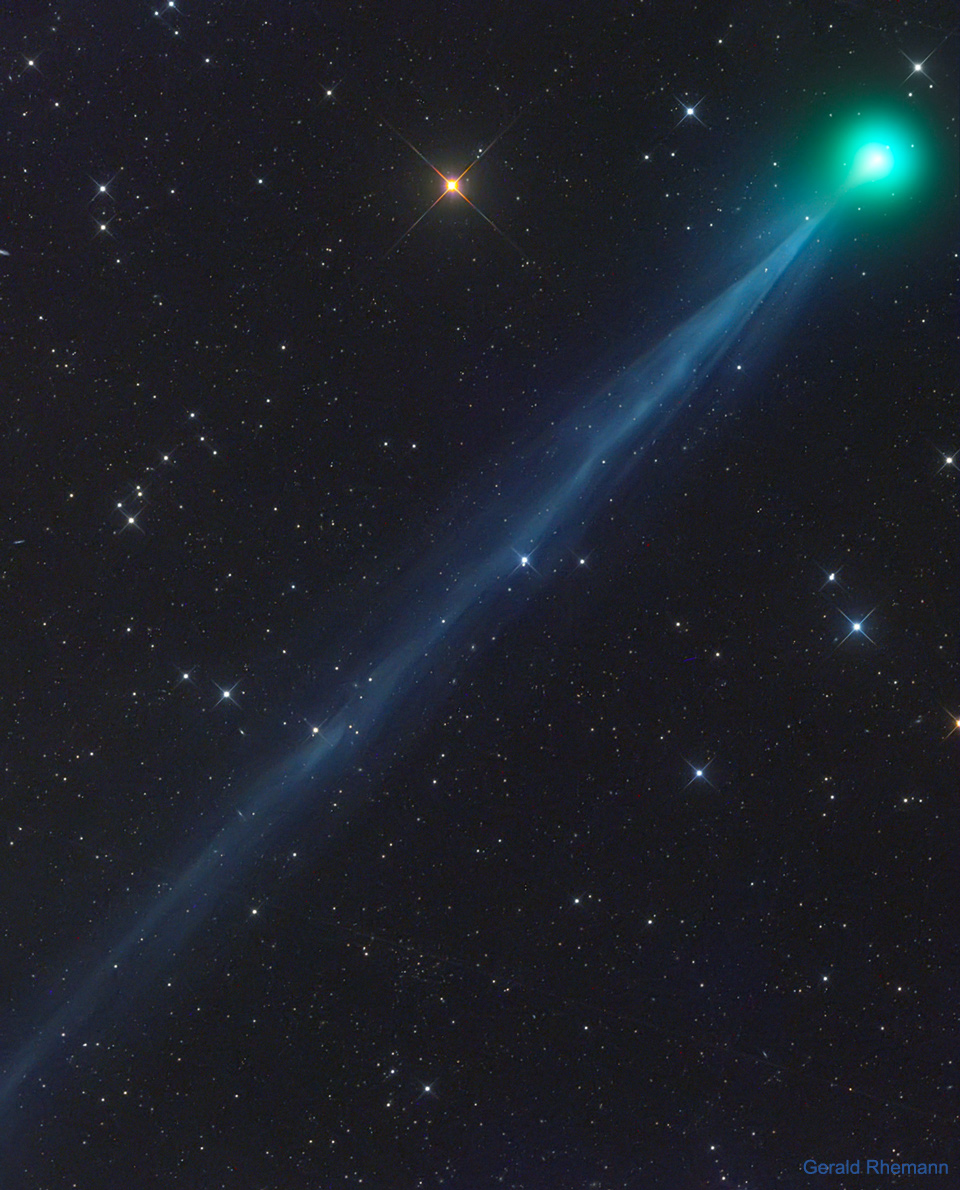2020 April 29
The Ion Tail of New Comet SWAN
Image Credit & Copyright: Gerald Rhemann
Explanation: Newly discovered Comet SWAN has already developed an impressive tail. The comet came in from the outer Solar System and has just passed inside the orbit of the Earth. Officially designated C/2020 F8 (SWAN), this outgassing interplanetary iceberg will pass its closest to the Earth on May 13, and closest to the Sun on May 27. The comet was first noticed in late March by an astronomy enthusiast looking through images taken by NASA’s Sun-orbiting SOHO spacecraft, and is named for this spacecraft’s Solar Wind Anisotropies (SWAN) camera. The featured image, taken from the dark skies in Namibia in mid-April, captured Comet SWAN’s green-glowing coma and unexpectedly long, detailed, and blue ion-tail. Although the brightness of comets are notoriously hard to predict, some models have Comet SWAN becoming bright enough to see with the unaided eye during June.
Experts Debate: How will humanity first discover extraterrestrial life?
Tomorrow’s picture: open space
史汪彗星的离子彗尾
影像提供与版权: Gerald Rhemann
说明: 新彗星史汪在发现时,已经有很壮观的彗尾。而这颗来自太阳系外围的彗星,目前已在地球的轨道之内。正式编录号为C/2020 F8 (SWAN)的这颗行星际冰山,将在5月13日运行最靠近地球的位置,在5月27日抵达近日点。这颗彗星是在今年3月由一位天文爱好者,在检视美国航太总署·SOHO卫星的影像时所发现,因此就以这颗卫星取像的史汪(SWAN;太阳风异向性)相机来命名。上面这幅记录史汪彗星泛绿彗发和颀长细致泛蓝离子彗尾的主题影像,是在今年4月中摄于纳米比亚幽暗的夜空下。虽然彗星的亮度是出了名的难以预测,不过有些模型推断在7月时,史汪彗星会增亮成为肉眼可见的彗星。(Comet SWAN史汪彗星)
专家辩论: 人类如何找到首例的外星生命?
明日的图片: open space




真的漂亮
继ATLAS,今年第二颗裂开的彗星(狗头)